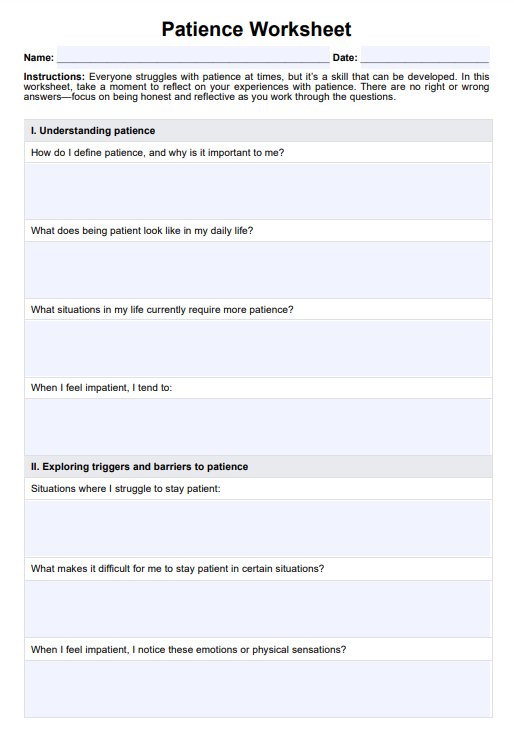Patience Worksheets are excellent tools for teaching children important life skills, such as waiting and emotional regulation. For younger children, including a coloring page or interactive tasks can make practicing patience enjoyable and engaging. These worksheets guide kids to reflect on moments when they feel impatient, helping them develop a better understanding of their emotions and learn fun, practical ways to stay patient during challenging situations.

Patience Worksheet
Use our Patience Worksheet to help clients reflect on their experiences and develop strategies to manage impatience effectively.
Patience Worksheet Template
Commonly asked questions
Patience Worksheets are ideal for school or therapeutic environments, as they guide students or clients in exploring their responses to impatience and developing strategies to manage them. In schools, teachers can use these worksheets as part of lessons on emotional intelligence, while therapists can incorporate them into sessions to help clients understand and work through specific triggers. Activities like reflection, writing, and discussion make these worksheets engaging and educational.
In our Patience Worksheet, there is a section that provides actionable strategies like deep breathing, adjusting expectations, and setting small milestones to help individuals practice patience. It also includes reflective questions to explore triggers and identify emotions that arise during moments of impatience. These strategies help individuals cultivate calm and constructive responses to challenges, making the worksheet a practical and effective tool for building patience as a life skill.
EHR and practice management software
Get started for free
*No credit card required
Free
$0/usd
Unlimited clients
Telehealth
1GB of storage
Client portal text
Automated billing and online payments











